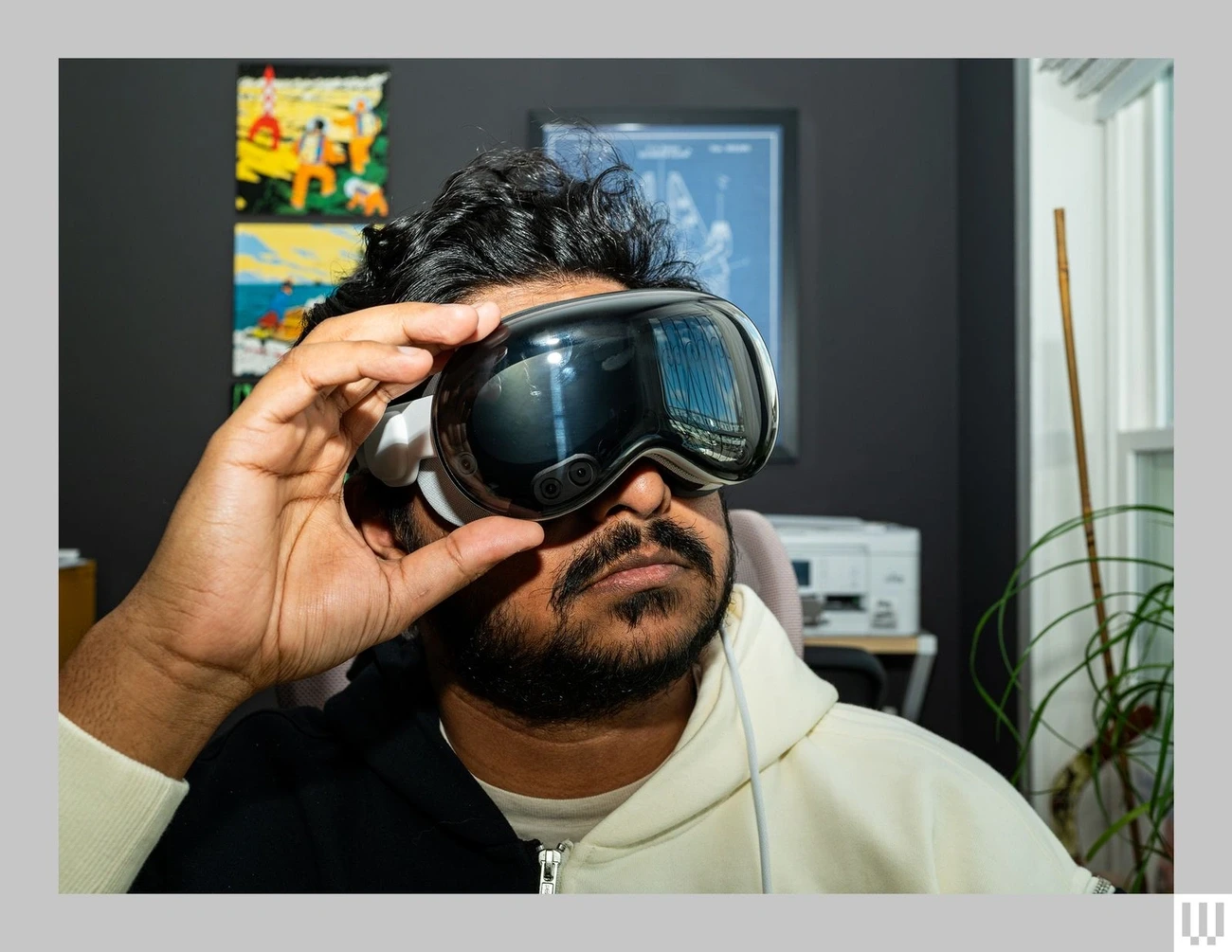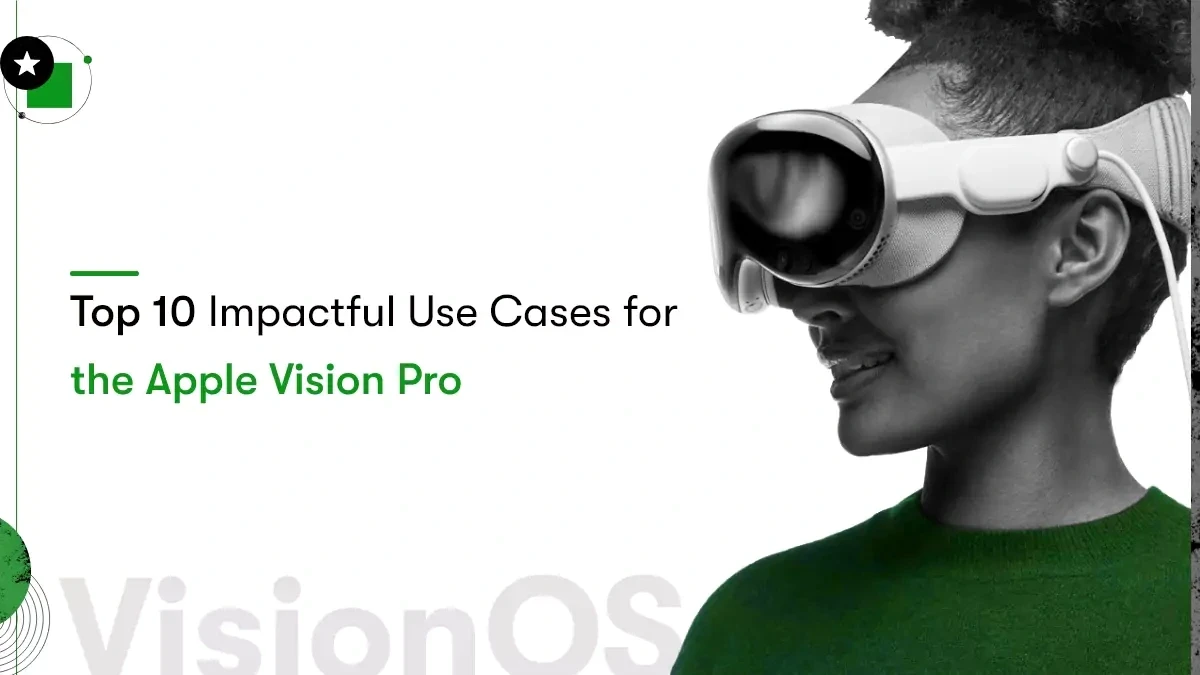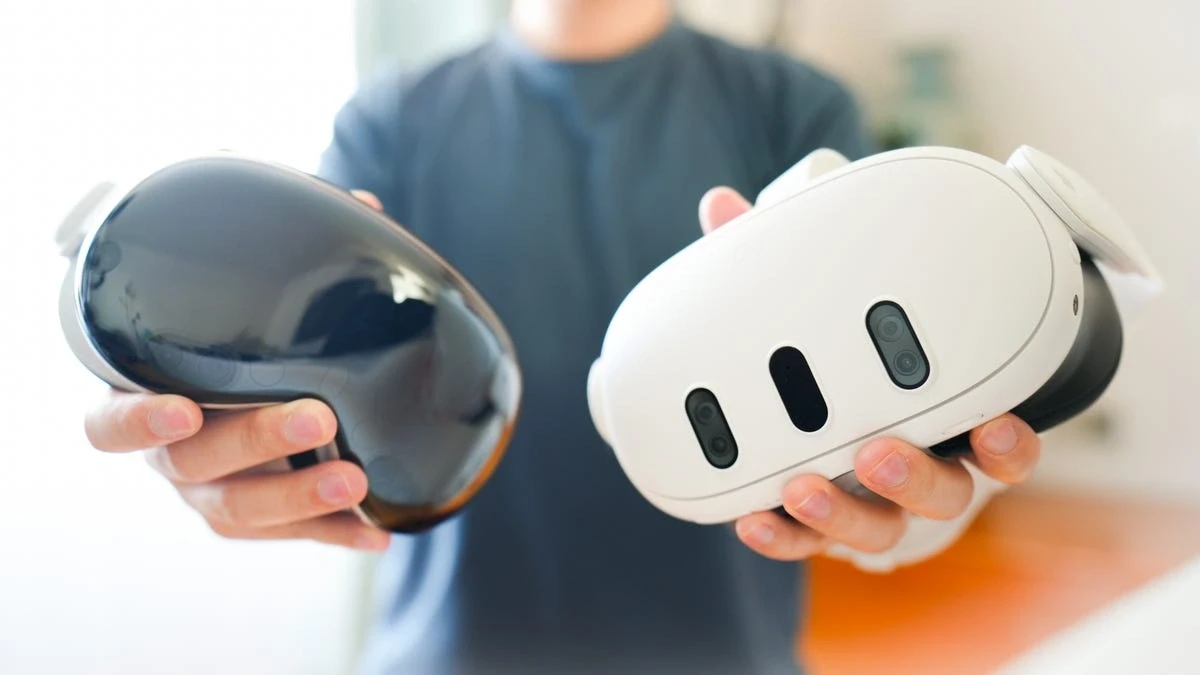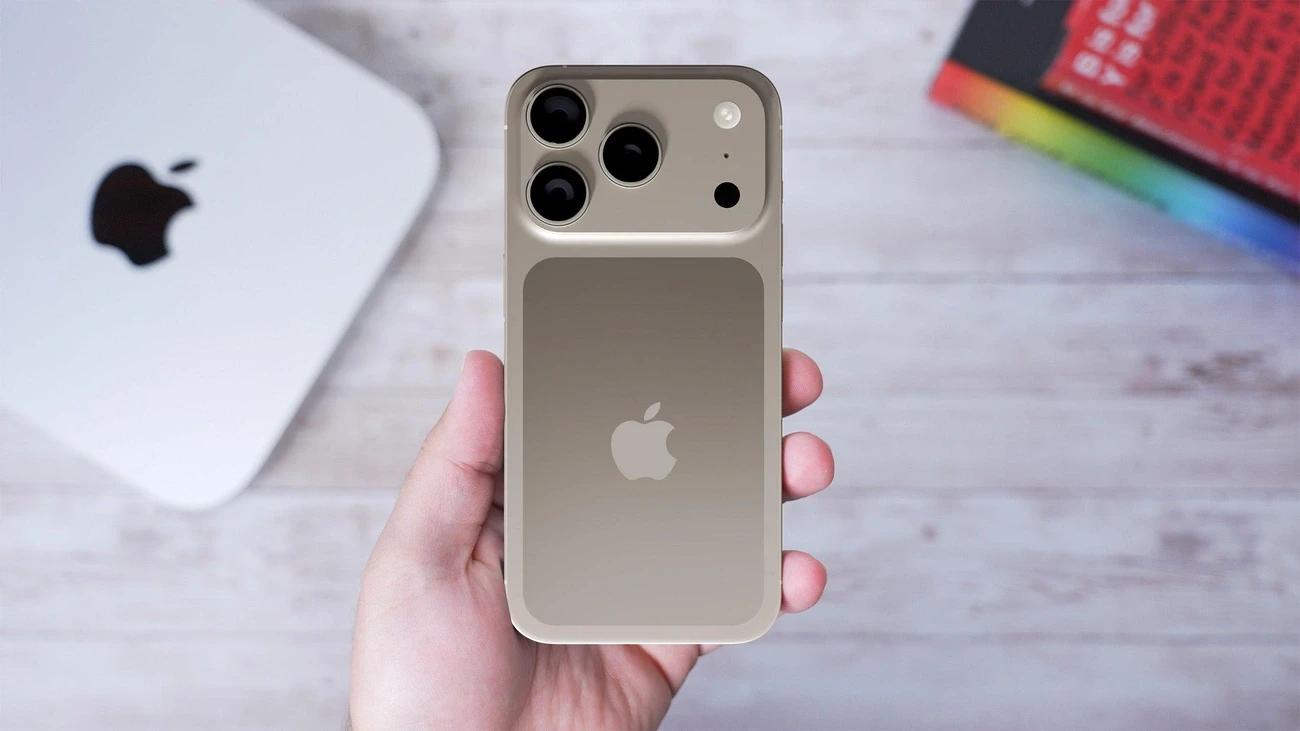Apr 30, 2025
Apple Vision Pro: What Early Users Are Actually Saying in 2025
Apple Vision Pro stunned the tech world with its $3,499 price tag at its February 2024 launch. The device proved its market appeal by selling 200,000 units in just two weeks of pre-orders. By June 2024, Apple expanded beyond the U.S. market to China, Hong Kong, Japan, and Singapore. Early users have shared mixed experiences. The ultra-high-resolution displays boast 23 million pixels per eye - more than a 4K TV. However, users point out the short 2-2.5 hour battery life and occasional problems with eye tracking. The device has caught the attention of major businesses, and more than half of Fortune 100 companies have bought it to create groundbreaking solutions. The Vision Pro's app ecosystem now features over 2,000 custom-designed apps and 1.5 million compatible iOS and iPadOS applications. This piece dives into the real-life experiences of Vision Pro users after their first year with Apple's spatial computing headset.
What early users love about Apple Vision Pro

Image Source: WIRED
Apple Vision Pro's early users can't stop talking about what makes spatial computing so exciting. Three standout features make this device different from regular VR/AR headsets.
Immersive display and spatial audio
Apple Vision Pro's visual experience leaves users amazed. The device comes with 23 million pixels across two micro-OLED displays. Each eye gets resolution better than a 4K TV. This ultra-high pixel density, with a precise 7.5-micron pixel pitch, creates crystal-clear images that users can't stop raving about.
The sort of thing I love about Vision Pro is how it turns your regular room into a personal movie theater. The display makes you feel like you're watching content on a screen that feels 100 feet wide. Supported refresh rates of 90Hz, 96Hz, and 100Hz give you smooth playback without any stutters.
The spatial audio system matches these amazing visuals. Audio pods near your ears create rich sound that adapts to your room through audio ray tracing technology. The sound doesn't just move with your head—it learns your room's acoustic properties and creates natural, three-dimensional audio.
Natural eye and hand controls
The user-friendly control system gets the most praise from early users. Vision Pro brings what many call a game-changing interface, unlike other headsets that need controllers.
"It's instinctively easy," say users who've tried the system. Your eyes become the pointer with Vision Pro—just look at what you want to use, and the interface responds right away. The eye tracking works so well that menu bars expand just from your glance.
A simple pinch with your thumb and index finger selects items—no pointing or specific hand positions needed. After you scan your hands during setup, the headset picks up your gestures almost anywhere within a 180-degree zone in front of you. Users can even control things with their hands in their laps, way better than the limited tracking zones other headsets offer.
The system supports natural gestures like:
Pinching and dragging to move windows or scroll through content
Two-handed pinch and pull motions for zooming
Looking at your palm to access quick controls
Uninterrupted integration with Apple ecosystem
Apple users find immediate value in Vision Pro's connection to their existing devices. Setting up feels just like getting a new iPhone—hold your iPhone close to Vision Pro and sign in with your Apple ID.
Your photos, messages, emails, and other content sync right away through iCloud. Safari, Photos, Music, and Messages merge naturally into spatial computing. These apps keep their core features while adding new dimensional abilities.
Mac Virtual Display helps boost productivity. Users can wirelessly connect their Mac and work with an expandable, ultra-wide screen that matches two 5K monitors side by side. You can work comfortably for hours without needing a traditional desk setup.
On top of that, Vision Pro works naturally with Magic Keyboard, Magic Trackpad, and other Bluetooth accessories. This makes it a serious work tool, not just another device for consuming content.
Top use cases users are excited about with apple vision pro

Image Source: Kody Technolab
People who took Vision Pro home found some amazing apps that really show what this headset can do. Users keep coming back to four main ways they love using it.
Watching movies in personal cinema mode
Vision Pro has become a home theater replacement that many users love. The Cinema Environment turns any space into your own private theater and creates an experience of sitting in a dark cinema with a screen that looks up to 100 feet wide.
"I watched my favorite TV show on Apple Vision Pro and it was both glorious and kind of crappy, all at the same time," one user explained, highlighting the mix of amazement and adjustment that comes with the experience. Most users pick "Front" seating in Cinema Mode, which gives them a screen that looks at least 15 feet tall and 25 feet wide—just like sitting in those first few rows at a real theater.
The picture quality stands out with support for different aspect ratios and formats, including Super Panavision 70mm. The spatial audio impresses even the doubters: "The Vision Pro is exceptionally good at making it sound like I was in a big cinema room. That's where the spatial audio really came through for me".
Using multiple virtual screens for work
Professionals love knowing how to create unlimited workspace anywhere. Mac Virtual Display brings your Mac wirelessly into Vision Pro and creates an expandable, ultrawide screen that matches two 5K monitors side by side. This setup works great with Bluetooth accessories like Magic Keyboard and Magic Trackpad.
A user put this to the test: "I spent more than a week working almost exclusively in the Vision Pro. I carried on Slack conversations, dialed into Zoom video calls, edited Google Docs, wrote articles, and did everything else I do within my day-to-day responsibilities". Some users got creative by making different rooms serve different purposes—the dining table became a writing space, the office handled communications, and the living room was perfect for media.
Vision Pro lets users switch between real surroundings and virtual ones, which helps them focus on creative work. Users can place virtual windows anywhere in 3D space, and shadows appear on surfaces below to make everything look more real.
FaceTime with spatial Personas
Spatial Personas has changed the way Vision Pro users connect. FaceTime calls between Vision Pro owners let people interact with each other's digital versions and hear voices through Spatial Audio, making it feel like everyone's in the same room.
"It's now shared in a way that gives you the power to teleport and see friends or colleagues, to work together, have fun, or even watch content together," said an excited user. The feature works with up to five people as long as everyone runs visionOS 1.1 or later.
This feature shines because it makes working together easier. Users can move Personas by looking at them and using a pinch-and-drag motion. The experience changes based on what you're doing—watching movies puts Personas side by side like theater seats, while gaming places them across from each other like they're at a table.
Playing spatial games with Apple Arcade
Apple Arcade brings fun that surprised many users. Games built for Vision Pro mix digital content with your actual space, and you control everything with your eyes, hands, and voice.
Super Fruit Ninja turns your living room into a dojo where you slice fruit with your hands, while WHAT THE GOLF? lets you perfect your shots as you move around a quirky golf course right at home. Game Room stands out, and its developer explains: "We've designed Game Room to provide the most authentic digital game night to date, with gaming experiences that are practically indistinguishable from their real-life counterparts".
New games keep coming. Warped Kart Racers lets players steer, drift, and throw objects with their hands like they're driving actual karts. Cityscapes: Sim Builder gives you a bird's-eye view to manage your city, and you use hand gestures to create roads and neighborhoods. Right now, there are more than a dozen spatial titles available, plus 250+ iOS and iPadOS games that work with the system.
Common complaints and limitations of Apple vision pro
Apple Vision Pro's innovative technology impresses users, but early adopters point out several challenges. Some users have returned their devices while others try to adapt to these limitations.
Short battery life and external pack
Battery limitations create immediate problems for Vision Pro users. The external battery pack lasts only 2 hours of general use or 2.5 hours to play videos. Users can't watch longer movies or work for extended periods. The brick-like battery connects through a permanent cable that users can't hot-swap. A user expressed frustration: "I had my Vision Pro connected to the charger when I left it was at 100% charge, I come back and it's at 1% and will not hold a charge".
Eye tracking inconsistencies
Eye tracking plays a vital role in Vision Pro's experience, but precision problems bother users. The system doesn't deal very well with controls that are "just a little too small and a little too close together". The experience becomes difficult especially when you have eye conditions like nystagmus (affecting 0.1% of the population). A user reported only "a 50% success rate 'clicking' what I thought I was looking at". Users find it distracting to look directly at interface elements during long sessions.
Limited app support at launch
Vision Pro's ecosystem shows gaps as major developers like Netflix, Spotify, and YouTube hold back their support. Apple released its podcast and news apps as iPad versions instead of native visionOS experiences. Users must use workarounds like watching Netflix through Safari. Bloomberg reported higher-than-expected returns due to this lack of content.
High price point for average users
The Vision Pro costs $3,500, making it too expensive for most consumers. CEO Tim Cook acknowledged this fact, stating it's "not a mass-market product" but rather "an early-adopter product" for "people who want to have tomorrow's technology today". The price barrier and other limitations made Apple delay a cheaper model until at least 2027.
How Apple Vision Pro compares to expectations

Image Source: ZDNet
The Vision Pro has sparked mixed reactions about its place in tech after months of ground testing. People's early excitement has given way to deeper thoughts about what this device really means.
Is Apple vision pro really the future of computing?
Many analysts see the Vision Pro as a "bridge device" between today's VR headsets and tomorrow's AR glasses, not a revolutionary breakthrough. The Vision Pro seems to work more as a foundation for developers to grasp Apple's spatial computing direction than a complete computing platform. Apple CEO Tim Cook agrees and says it's "not a mass-market product" but "an early-adopter product" for "people who want to have tomorrow's technology today."
Nobody knows if the device will add to or replace our regular computers. Users grab their Vision Pro mostly to watch media instead of using it as their main computer. This shows the Vision Pro shines more as a special tool than the radical alteration Apple first claimed it would be.
How it stacks up against Meta Quest and others
The Vision Pro beats Meta's Quest 3 ($500) in visual quality and passthrough capability. Quest 3's video passthrough looks fuzzy, while Vision Pro lets users read text on monitors and phones through the headset. Vision Pro's micro-OLED displays make this clarity possible, unlike Quest 3's lower resolution panels.
The controls tell two different stories. Vision Pro's eye and hand tracking feels natural and groundbreaking—users just look at objects and pinch to select. Quest 3's hand tracking needs exact positioning and doesn't always work right.
In spite of that, Quest 3 has its wins:
Better battery life (built-in vs. external pack)
Price tag nowhere near as high ($500 vs. $3,500)
Strong gaming library
Support for multiple virtual monitors (Vision Pro limits to one Mac display)
What surprised users the most in Apple vision pro
The cinema experience amazed even the skeptics. Users didn't expect such a big jump from regular displays, and many think Vision Pro beats their home TVs for watching movies.
The social disconnect caught people off guard. Even with passthrough features, using Vision Pro creates barriers—you're basically alone with a computer on your face. One reviewer put it simply: "I might be enjoying my time in the headset, but it's isolating for her."
New users love how the eye tracking seems to read their thoughts at first, then get frustrated when it misses their focus sometimes. The magic of controller-free use fades a bit as some users miss having something to hold during long sessions.
The biggest surprise? People use their Vision Pro differently than planned—mostly for watching media and personal space rather than work or social apps.
What users want to see improved in Apple Vision Pro 2
Vision Pro users have created a clear wishlist for the next generation after a year of hands-on experience. Their feedback points to four key areas that Apple must improve to make spatial computing reach the mainstream.
Lighter and more comfortable design
The current Vision Pro weighs approximately 650 grams. Users feel discomfort when they wear it too long. The device creates pressure points where it seals against their face, and most people can't wear it beyond an hour. "Make it by a lot lighter. Move whatever you can to the battery and use carbon fiber for the case!" one user emphasized. Apple might use titanium construction for Vision Pro 2 according to industry reports. This material would be by a lot lighter than the aluminum in the current model. Users also want a better-balanced design that spreads the weight evenly across their head.
Longer battery life
Battery life stands out as a major pain point. Users just need better performance than the current 2 hours 26 minutes of general use. The device can't hot-swap batteries, which frustrates many users. They must shut down and restart completely when changing batteries. This process takes "under a minute" but disrupts their workflow. Vision Pro 2 users want enough battery power to watch full movies or complete work sessions without breaks.
More native apps and developer support
The app selection falls short compared to other Apple platforms. The Vision Pro store offers only 1,770 apps—and all but one of these apps weren't built specifically for the device. Developer interest lags behind previous Apple products. The iPhone gathered 50,000 apps within its first year. The Apple Watch reached 10,000 in just five months. Users want native versions of Netflix and YouTube. They also want more immersive games that use spatial computing features.
Lower price or more affordable model
The $3,500 price tag remains the biggest barrier stopping people from buying. Apple might target a more available $1,500-$2,000 range for Vision Pro 2. This could help reach more customers beyond early adopters. "There is no market niche appropriate for the combination of price and features" at the current price point, noted one analyst. Vision Pro must compete better with alternatives like Meta Quest, which costs as little as $299.
Final thoughts on Apple vision pro
Apple Vision Pro has created quite a stir since its 2024 debut, though not exactly how Apple might have wanted. This innovative device sits at an interesting crossroads between impressive technology and real-life limitations. The ultra-high-resolution display, accessible eye and hand controls, and continuous connection with Apple's ecosystem create truly amazing moments for users. The short battery life, occasional eye tracking issues, limited app support, and that hefty $3,500 price tag hold Vision Pro back from reaching the masses.
Vision Pro doesn't really deliver the computing revolution we were promised. It works better as a bridge technology that shows us what spatial computing could be while dealing with first-generation growing pains. Apple's CEO understands this reality and calls it an "early-adopter product" instead of something for everyone. Users seem to agree - they mostly use Vision Pro to consume media rather than as their main computing device.
The Vision Pro 2 wishlist is pretty clear. Users want a lighter design, much better battery life, more native apps, and a price that won't break the bank. These changes would solve the biggest problems that keep more people from buying it. Vision Pro offers an impressive yet imperfect peek at a future where spatial computing might replace our screens - we're just not there yet.
FAQs
Q1. Is the Apple Vision Pro worth its high price tag in 2025? While the Vision Pro offers impressive technology, its $3,500 price point remains a significant barrier for most consumers. It's best suited for early adopters and tech enthusiasts who are willing to invest in cutting-edge spatial computing, rather than the average user.
Q2. What are the main advantages of using Apple Vision Pro? Key benefits include its ultra-high-resolution displays, intuitive eye and hand controls, seamless integration with the Apple ecosystem, and immersive experiences for watching movies and working with multiple virtual screens.
Q3. What are the most common complaints about Apple Vision Pro? Users frequently cite short battery life, the need for an external battery pack, occasional eye tracking inconsistencies, limited native app support, and the high price as the main drawbacks of the device.
Q4. How does Apple Vision Pro compare to other VR/AR headsets? Compared to competitors like Meta Quest, Vision Pro offers superior visual quality and more intuitive controls. However, it's significantly more expensive and has a more limited app ecosystem, especially for gaming.
Q5. What improvements are users hoping to see in the next version of Apple Vision Pro? For Vision Pro 2, users are primarily requesting a lighter and more comfortable design, longer battery life, broader native app support, and a lower price point to make the technology more accessible to a wider audience.









